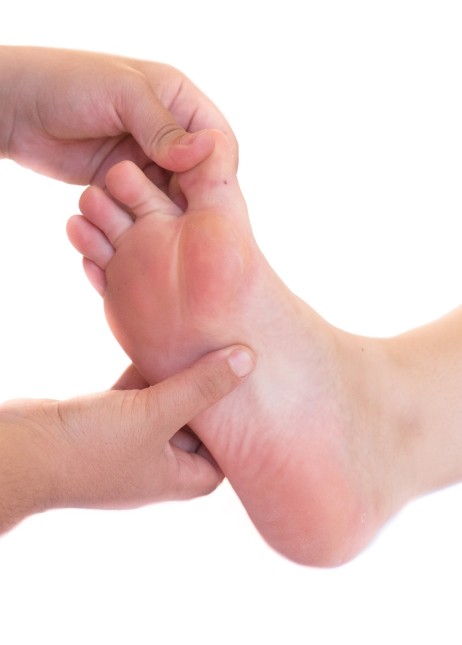Plantar fat pad atrophy describes the breakdown or thinning of the fat pads on the bottom of our feet. These fat pads work to provide cushioning to the bones of our feet and help absorb forces as our feet take on heavy loads each day. Without these, the bones are placed under significantly more pressure and are more susceptible to injury. Plantar fat pads are located at the heel and at the ball of the foot.
What causes plantar fat pad atrophy?
 The progressive thinning of fat pads occurs as we grow older, though this should not cause any issues until the late years. Other causes may include:
The progressive thinning of fat pads occurs as we grow older, though this should not cause any issues until the late years. Other causes may include:
- Genetic predisposition
- Abnormal structure of positioning of the bones of the foot that damages the fat pad beneath
- Conditions such as diabetic neuropathy
- Surgery or trauma such as fractures
- Certain medications
- Shoes that place more pressure on the fat pads such as high heels, or walking in bare feet
Fat pads may also become displaced from where they are needed most to other areas of the foot.
What are the symptoms?
When plantar fat pads are thinned or broken down, the bones will start taking on a much heavier load and the feet will not be able to absorb shock as effectively. This can cause:
- Pain and tenderness in the overloaded bones
- Inflammation
- Formation of callus and/or corns
- Ulceration
- The skin may feel thinner
- Bones may be more prominent and may feel like you’re walking on a small stone
How is it treated?
Because the damage and thinning to the plantar fat pads is largely irreversible, treatment focuses on providing the feet with the missing cushioning and shock absorption. This is often done through a combination of cushioning orthotics and good footwear. Avoiding activities that exacerbate the symptoms such as walking in bare feet and maintaining a healthy weight will also reduce the load from your feet and minimise the onset of painful symptoms. Your podiatrist will create a tailored treatment plan based on the cause of your plantar fat pad atrophy, your symptoms, and daily activities.








